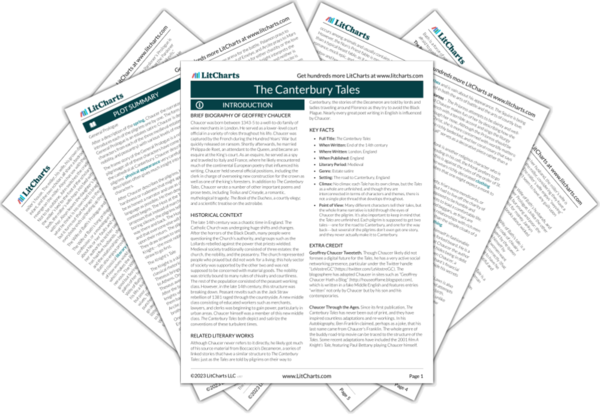AI ToolsNew
Tools to make learning and teaching easier
|
Previous
Springtime
|
Clothing and Appearance Symbol Analysis |
Next
Literary Allusions
|
Ful weel she soong the service dyvyne
Entuned in hir nose ful seemly,
And Frenssh she spak ful faire and fetisly,
After the scole of Stratford atte Bowe,
For Frenssh of Parys was to hir unknowe.
